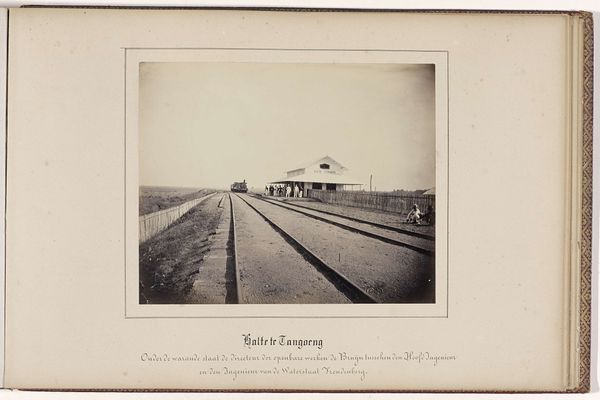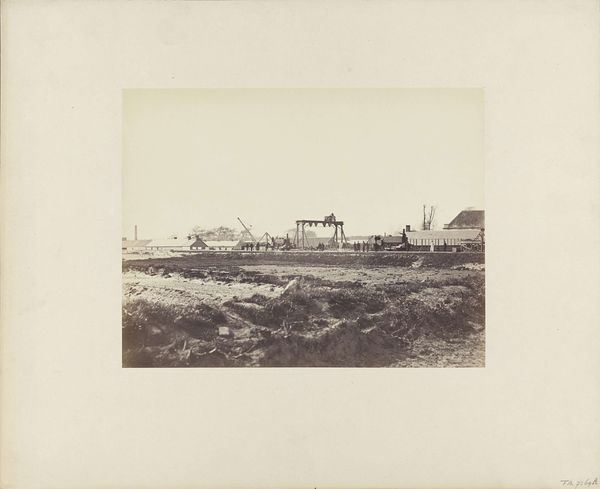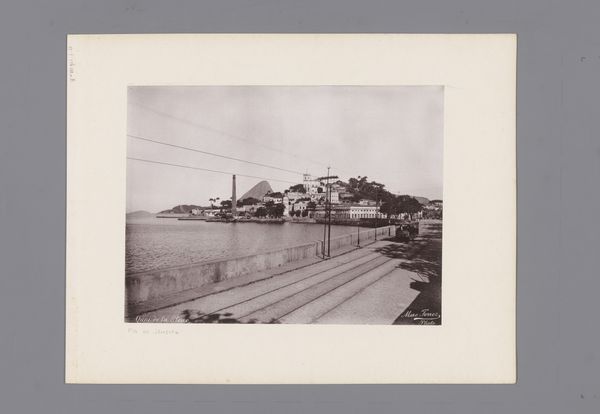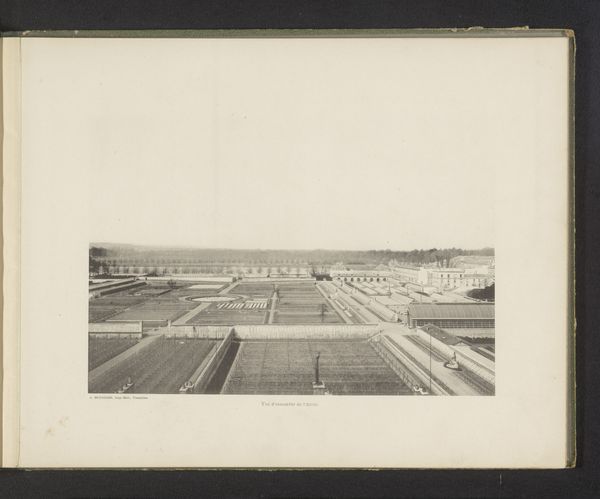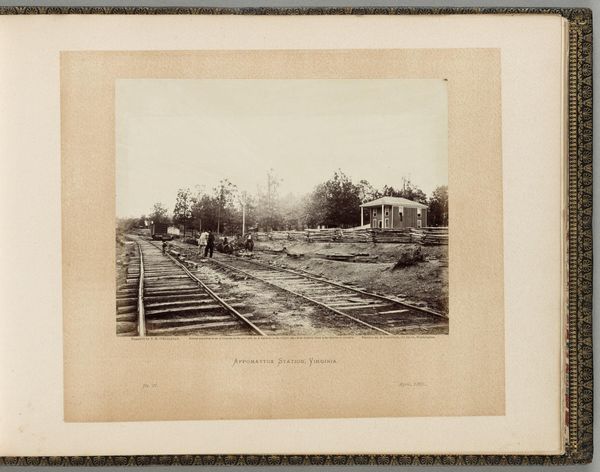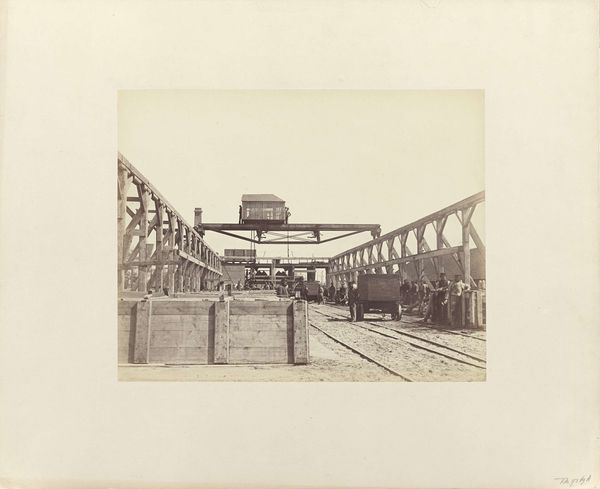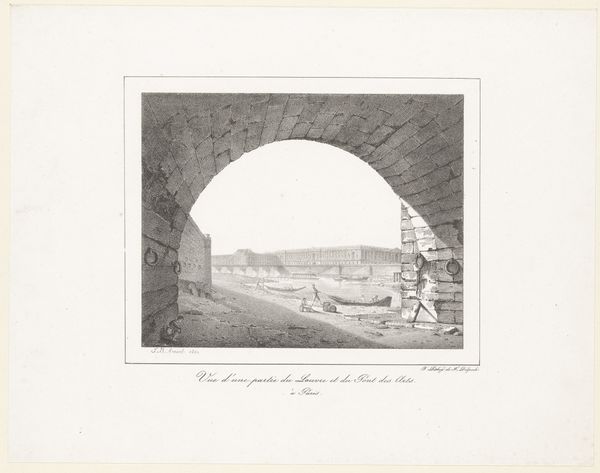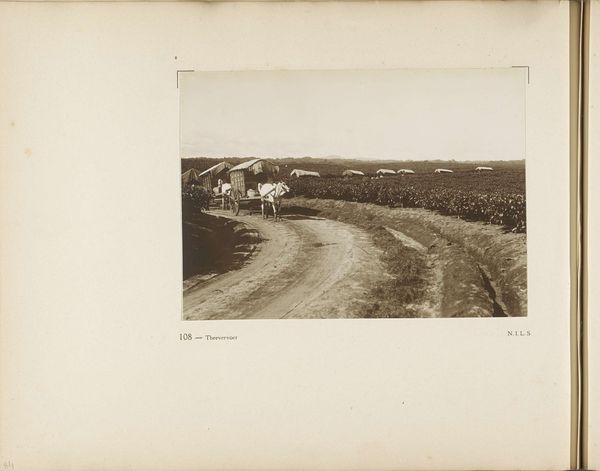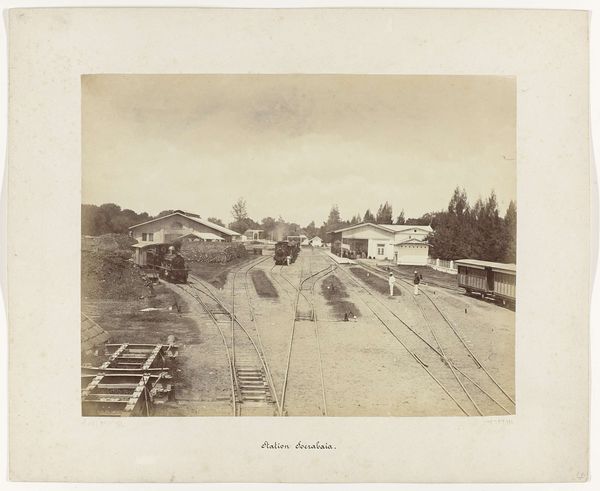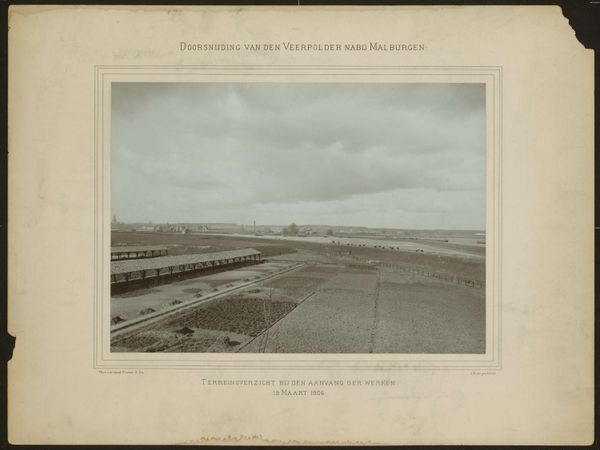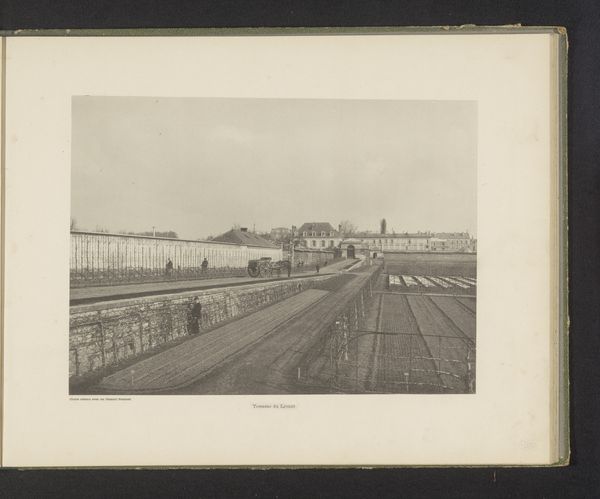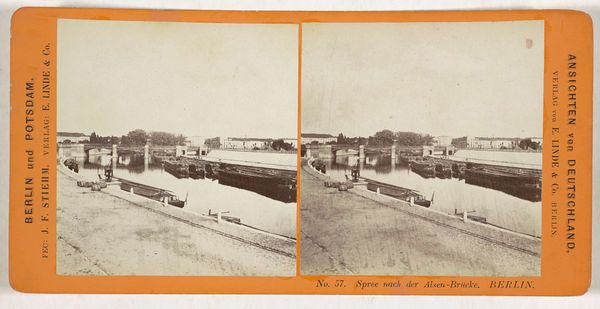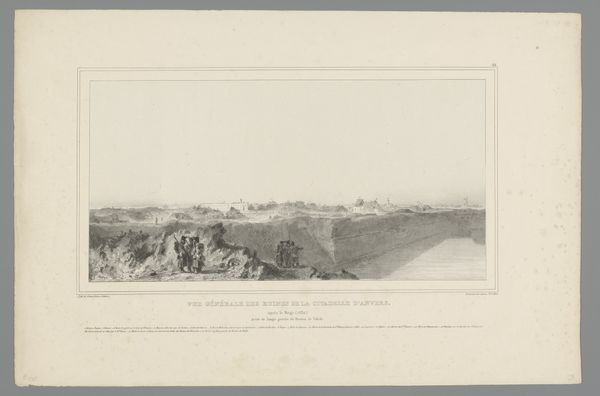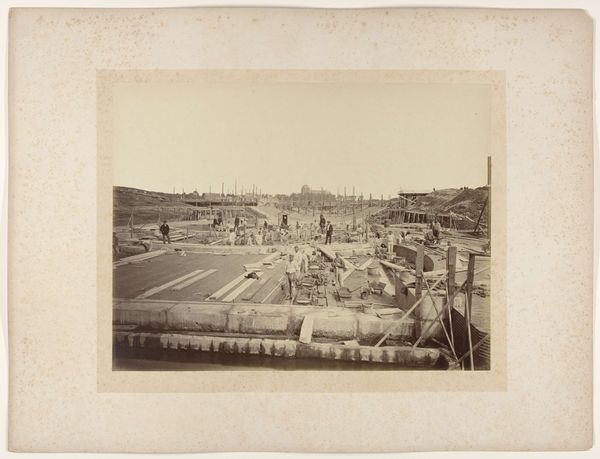
Station Kedoeng Djattie / Links de woning van den Stationschef met bijgebouwen. Regts daarvan de tijdelijke woning van den beambte Schoon waarin de bureaux. Regts daarvan de rijtuigenloods. Verder het Stationsgebouw met de pendoppo voor de reizigers 3e Klasse. 1867 - 1868
0:00
0:00
photography, site-specific
#
photo of handprinted image
#
landscape
#
photography
#
site-specific
Dimensions: height 198 mm, width 235 mm, height 305 mm, width 450 mm
Copyright: Rijks Museum: Open Domain
This photograph of Station Kedoeng Djattie, was taken by Woodbury & Page in the late 19th century. The image has an incredible amount of fine detail, which the photographers would have achieved by using the wet collodion process. This involved coating a glass plate with chemicals, exposing it in the camera while still wet, and then developing it immediately. What strikes me most is the amount of labor implied in this image. The railway tracks themselves, made of iron or steel, were products of intense industrial effort. Think of the mining, smelting, and forging required to produce them, not to mention the carpentry in the station’s buildings. And consider the many hands that would have been involved in constructing the railway itself – a transformative infrastructure project, which would have extracted resources and labor from the surrounding landscape. This photograph is not just a record of a place, but also a testament to the immense material and social changes brought about by industrialization and colonialism. It reminds us that every object, even a photograph, is the result of countless processes and human efforts.
Comments
No comments
Be the first to comment and join the conversation on the ultimate creative platform.
